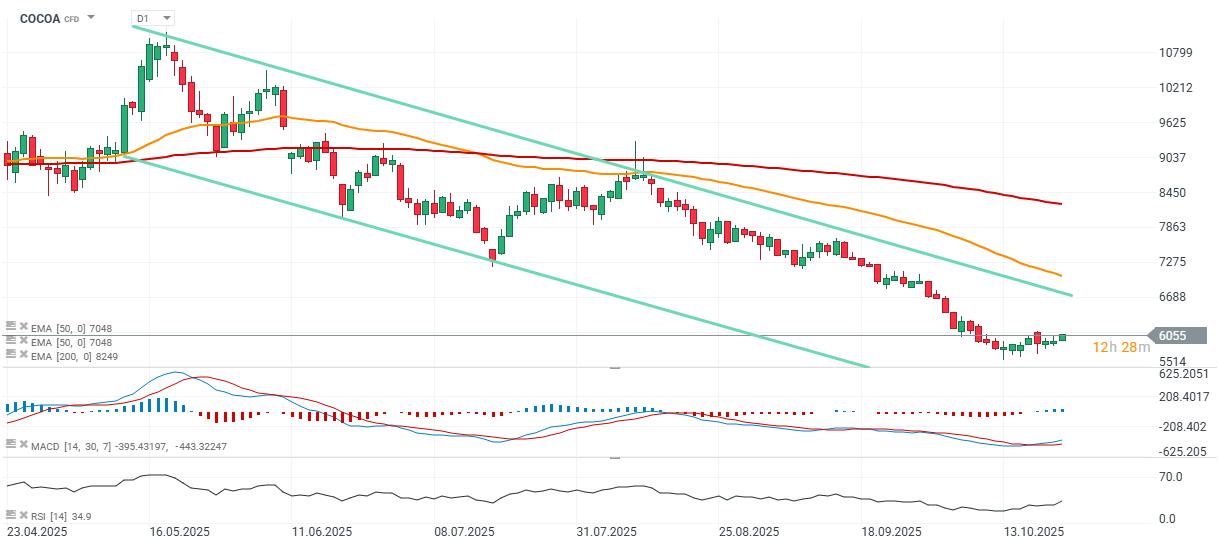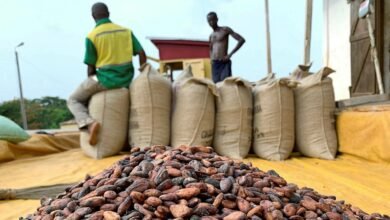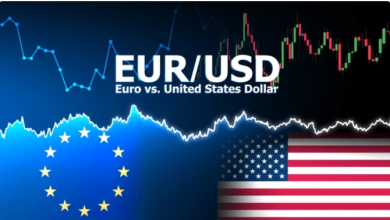Trade of The Day – COCOA
Facts
- Cocoa futures on ICE (COCOA) gain almost 2% today (September 22)
- North American cocoa grindings in Q3 rose 3.2% year-on-year.
- Côte d’Ivoire’s cocoa exports dropped 31% year-on-year at the very start of the new harvest season (October 1–19).
- Short positions in London have reached their highest level since late 2022.
Recommendation
Long position on COCOA at market price
- Take profit: 6600
- Stop loss: 5750
Opinion
The cocoa market currently finds itself in a fragile equilibrium after a sharp sell-off that pushed ICE contracts below $6,000 per metric ton. While some short-term rebound attempts are visible, the nature of this move appears more like a technical correction than a structural trend reversal. Fundamentally, the market remains caught between improving supply conditions and cooling demand, making the recent gains fragile.
Grinding data from Asia (-17%) and Europe (-4.8%) clearly indicate that global cocoa demand remains subdued, as the chocolate industry continues to react to previously record-high prices by limiting production. The only positive surprise came from North America, where grindings rose 3.2% year-on-year — a result that, alongside a few other supporting factors, may have helped investors adopt a slightly less pessimistic outlook toward the broader market.
On the supply side, conditions have temporarily deteriorated. Data from Côte d’Ivoire showed a 31% drop in cocoa exports at the start of the new season, prompting some investors to cover short positions. Despite occasional heavy rainfall in West Africa, weather conditions remain generally favorable — while rains may temporarily disrupt logistics, they also support crop growth, increasing the likelihood of strong harvests in November and December.
Notably, positioning data from the London market show the most bearish sentiment since late 2022 — a period that also coincided with a local price bottom and the beginning of a new rally. The current futures curve (a mild contango through Q3 2025) suggests greater confidence in future supply, though the market still lacks a clear demand-driven catalyst.
From a seasonal perspective, the late October to early November period has historically marked local bottoms in cocoa prices. If the decline in Ivorian exports proves persistent, the current levels could represent a potential accumulation zone. After months of parabolic gains followed by a deep correction, cocoa is now entering a phase of price discovery and equilibrium testing. Sentiment remains cautious, but the heavy concentration of short positions combined with signs of supply normalization may soon create conditions for a technical rebound.
In the medium term, the health of global demand will remain the key determinant for sustained price recovery. We maintain a long recommendation on COCOA, with a target level of 6600, identified using price action methodology.

Source: xStation5






